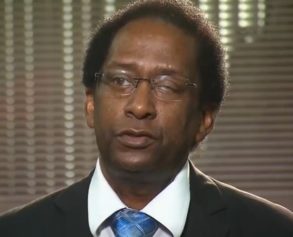
Numerous U.S. companies require sensitivity training for their employees.
In November of 2016, Burnet County, Texas, judge James Oakley used social media to voice his contempt for a Black male suspected of killing a San Antonio police officer. Invoking the imagery of lynching, Oakley, who is white, said the alleged killer needs a “tree and a rope.” After months of controversy, local publication Dailytrib.com reports the Texas State Commission on Judicial Conduct sentenced Oakley to harsh, Southern justice: “Four hours of racial sensitivity training with a mentor.”
Frequently recommended, always unsuccessful and insufficient, sensitivity training supposedly helps white people like Judge Oakley have a better appreciation for Black lives and pet peeves about hangings and racial terrorism. But after decades of remedial sensitivity and diversity tutoring, the archetype of insensitivity, Donald J. Trump, was elected United States president. These sham exercises are shabby substitutes for legitimate redress of racial cruelty and fail to convince whites to dismantle the system of white supremacy.
The tough on crime rhetoric that leads to prisons around the nation filled with Black bodies does not apply to racists. Like Judge Oakley, a pair of white Ohio State Highway Patrol Officers was gently sanctioned after one of the officers posed as a Ku Klux Klan member while his partner snapped a photo. According to ABC News, Craig Franklin and Eric Wlodarsky “were required to take part in diversity awareness training,” but allowed to retain their badges after their 2008 “prank.”
Thankfully, then-Governor Ted Strickland did not view “diversity awareness” as an adequate remedy and had both officers fired.
This Ohio twosome reminds us of why generations of Black citizens regularly report racially insensitive encounters with police as humiliating and degrading and sometimes end up worse. The Congressional Black Caucus hopes preemptive use of “diversity training” can help reduce police shootings of Black citizens. Congressman G.K. Butterfield and fellow CBC members lobbied former President Obama to improve law enforcement in the U.S. “with community policing and training — sensitivity training.”
But who can believe these training exercises will prevent our Tamir Rices and Michael Browns from being killed when sensitivity sessions haven’t even helped Black people get hired. In the summer of 2016, the Harvard Business Review published “Why Diversity Programs Fail.” The report emphasizes that after all the highfalutin chatter “It shouldn’t be surprising that most diversity programs aren’t increasing diversity.” White guys retain a vise grip on financial, tech and Fortune 500 professions.
Diversity programs don’t convince whites to hire Black people, dislodge anti-Black beliefs or rehabilitate KKK-posing enforcement officials. Cynically, the HBR report suggests these sessions allow racists to camouflage their spite for Black people, noting, “People are easily taught to respond correctly to a question about bias.” Attendees learn to refrain from openly saying or tweeting about the Black people they hope to see hanged or other comments that could be viewed as racist.
Karen Fleshman, a diversity and inclusion strategist was asked about the potential for whites using her training to hone a more covert racist persona. She denied this being her motivation for the conducting the classes. “What I’m trying to get them to do is to understand our role as white people in replicating white supremacy [and] to radically disavow our superiority,” Fleshman said.
Despite her expressed intentions, Fleshman had no evidence to illustrate her success in reforming racists. Conversely, co-author of “The Beauty Con Game” Pam Evans suggests Black people not be bamboozled by sensitivity workshops. “Any group of people who creates an immoral system that justifies mistreating people on the basis of color cannot be trusted to dismantle that system,” writes Evans.
While the Harvard Business Review points out that diversity seminars haven’t demolished institutional blockades to gainful Black employment, sensitivity training has become a cozy niche industry for a number of people. In addition to Fleshman, the sensitivity “profession” includes former educator Jane Elliot and author Frances Kendall, who was named a “pioneer of diversity.” Kendall acknowledged that after all the money and buckets of words invested in sensitivity training, the workshops are mostly about appearing to not be racist as opposed to permanently purging racism. In a 2013 interview, Kendall admitted whites’ “fear of [honestly] talking about and labeling white supremacy” sabotaged much of the diversity campaign. She believes initial efforts were about increasing representation of Black and nonwhite people in white-controlled institutions and creating welcoming environments for the new hires to flourish. “I think now it has backed off to being just about numbers,” said Kendall.
Maintaining the traditionally minuscule numbers of Black employees while pretending to diversify and sensitize the white work force it would seem.

Zecole Thomas and her two children have moved out of California since Joseph Thomas committed suicide. (Image courtesy of USA Today)
This week, The Wall Street Journal reports tech and transportation titan Uber, plagued by months of scandal, fired more than twenty people “as a result of an investigation into claims that it had an aggressive [white] male dominated workplace.” The family of Joseph Thomas, a former Uber engineer, charge that the company’s stressful and racist work environment caused the Black husband and father to commit suicide. The vanguard of Silicon Valley and 21st century technological innovation seems stymied to correct these issues.
WSJ’s Greg Bensinger speculates Uber’s corrective actions may include typical measures like “sensitivity training.”
—————————————————————————————————
Gus T. Renegade hosts “The Context of White Supremacy” radio program, a platform designed to dissect and counter racism. For nearly a decade, he has interviewed and studied authors, filmmakers and scholars from around the globe.


